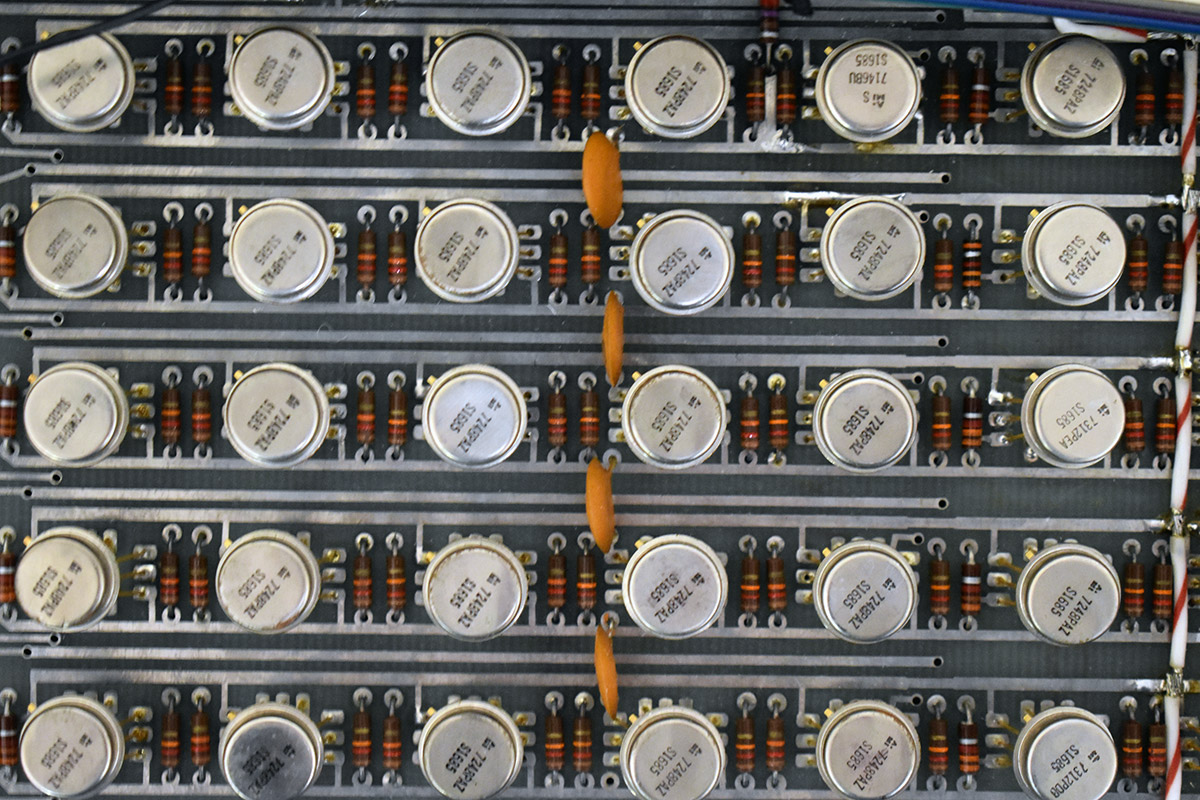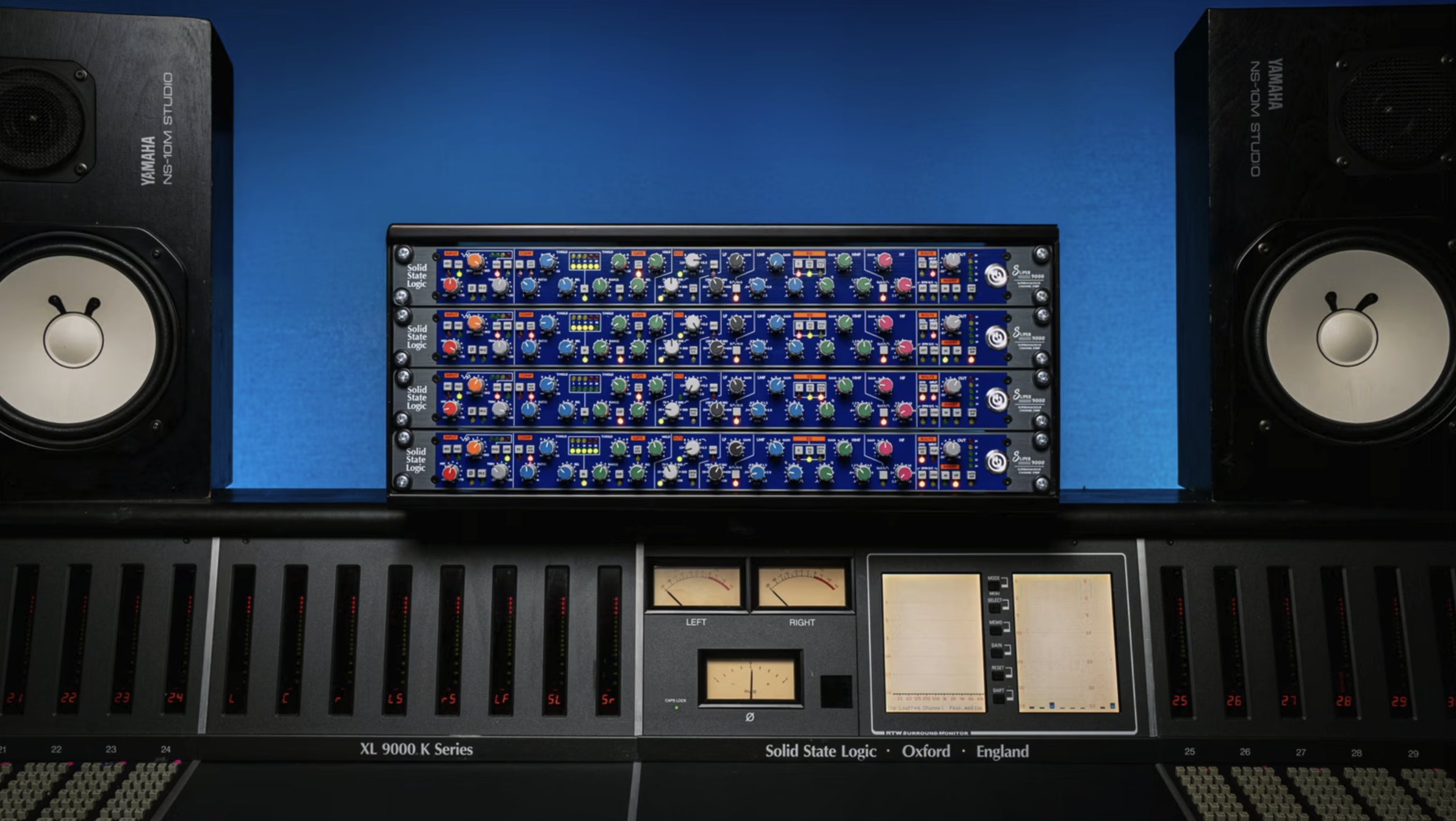
We only recommend products that we use and believe in. When you purchase through links on our site, we may earn an affiliate commission.
Flashback #2.1 – DDL 1745 Digital Delay – A Brief History of Time Delay, New York City, 1971
Until that day in 1971, recording, film, and broadcast gear was 100% electromechanical and analog. The word ‘digital’ had not yet entered the public, let alone the audio, lexicon. The console and all rack-mount gear (compressors, limiters and amps) were 100% analog. And every studio dedicated at least one tape machine for double tracking and pre-delay to feed their plate reverbs.
As Rod and John described, the job of the ‘tape op’ was to ensure that the tape machine being used for delay was always running, and woe to the assistant who let the tape run out while tracking or mixing! (This was before automated faders, when ‘mixing’ was an all-hands, real-time, performance.)
Tape delay was also routinely used to help solve a somewhat new problem with reverberation. In the ‘60s, echo chambers were rapidly being replaced by plate reverbs because they freed up precious studio space. Well-engineered plates had most of the attributes desired for reverberation: good and relatively uncolored frequency response, adjustable decay time, and high echo density. But plates had one shortcoming— no pre delay. In a room (or echo chamber), the reverb ‘wash’ doesn’t kick in for a fraction of a second; first there are ‘early reflections’ which impart the sense of the space. Without this ‘space’ before the high density wash of reflections, reverb sounds unnatural and intelligibility suffers. The ‘space’ was achieved by using tape delay to ‘feed’ the plate.
The Digital Delay Line
Enter Richard Factor. Richard was a young electronics wiz and, as a pre-teen (armed with his trusty tapered reamer), he had been building audio electronic projects for fun. He understood that If audio could be digitized with high enough fidelity, it could be stored as digital bits, converted back to analog and, voila, you would have achieved delay – in real time, with no moving parts. By 1970, the bits and pieces became available to build a commercial product.
The Shift Register – Wonderfully Unreliable and Fearfully Expensive
The breakthrough that made digital delay practical came in the form of a new semiconductor chip, the one- kbit shift register, which pushed the IC technology of the time right to the bleeding edge—thousands of transistors packed into a single chip! Put in perspective, it would take 8 million of these chips to store a gigabyte. Still one kbit was quite a feat for the time. And these chips were truly ‘bleeding edge.’ They ran hot and suffered high rates of ‘infant mortality.’ In spite of its shortcomings, the shift register enabled digital’s first serious foray into the world of pro-audio.

A Brief Pre-History of Time Delay
In the beginning, before our Flashback begins, before Eventide itself, there was Federal Scientific Corp. The Richard mentioned a few paragraphs earlier was working in the military-industrial complex, the very same one President Eisenhower warned us about in 1961, less than a decade before the Eventide story begins. Federal Scientific made sophisticated spectrum analysis equipment. How sophisticated? Look up the Pueblo incident; a sufficiently detailed account might mention some of the Federal equipment North Korea captured. The interregnum between Richard’s broadcast career and the founding of Eventide was spent building and testing such equipment. (Flash forward: Spectrum Analysis intertwines itself with Eventide history. But not yet.)
These years also encompassed the period when integrated circuits were new and evolving quickly. From a single or dual flip flop to a binary or decade counter. From RTL to ECL to LSTTL to MOS (you could look ’em up), the chip “families” proliferated and their complexity multiplied. And, Lo, not long into this brief era, the shift register emerged. By today’s standards they were not only primitive in terms of manufacture and features, they were wonderfully unreliable and fearfully expensive. Federal purchased shift registers to replace the persnickety ultrasonic (acoustic) delay modules—essentially tiny Cooper Time Cubes—used in the analyzers. And shift registers had, Richard recognized, possibilities.
Normally “fearfully expensive” and “wonderfully unreliable” would create a frisson of dismay in our lad’s story, albeit each for a different reason. Possibilities or not, perhaps they should be left to the military budget. But shift-register unreliability, a continuing theme in Eventide’s early history, was also responsible for our existence. You see, Federal Scientific’s commercial gear used all four sections of a quad shift register. If one section was bad, all four had to be discarded. Where to? With a few words to the technicians, into Richard’s capacious paws and pockets. And so, in his spare time, a phrase that had meaning in those days, he hand-wired an analog-to-digital converter with discrete parts (a story in itself), a bunch of shift registers, each with a defective section, and an integrated circuit digital-to-analog converter that didn’t quite meet specifications. As the collection of partial shift registers incremented, so did the delay ultimately achievable by this hand-wired prototype. Each group of eight good shift register sections of 256 bits yielded a few milliseconds of delay, enough to be audible and eventually enough to be interesting.
There The Matter Would Have Rested…
…had it not been for the sudden appearance of an advertisement in the ancient broadsheet publication “Electronics News,” a free subscription to which could be had by virtue of creative form-filling. The ad was for 980-bit shift registers for only ten dollars each! The manufacturer was AMI and, as we found out later, these were “seconds” that didn’t quite meet their primary customer’s requirements. (In what way? IBM wanted chips that always worked. Sound familiar?) Investing what was then a good portion of our not-yet-corporate treasure, Eventide obtained a few hundred of these chips, enough at first to manufacture the SEG FA 1755 Digital Delay. You are unlikely to see any of these available in the used market. We built exactly one.
Shift registers weren’t quite a proxy for a Ponzi scheme, but the OEM sale of this multi-second delay line, surely the longest in the world at the time, allowed us to buy even more shift registers. Which brings us to the beginning of the Flashback, and the Story of the Eventide 1745 Series of delay lines.
From A to D (and back again)
So, with a big bunch of 1k shift registers in hand, a commercial Digital Delay Line (DDL) becomes viable. However a major roadblock remained: the conversion of audio from analog to digital with sufficiently high resolution to satisfy pro audio requirements. Suitable off-the-shelf A-to-D chips were still a decade in the future. Eventide, like other digital audio pioneers, had no choice but to roll their own. The result was that each manufacturer’s product had a distinct sound.
The DDL 1745 The World’s First Digital Audio Device (1971)

Eventide’s first DDL, the 1745, was a 3U rack mount box with one input and two outputs. Each output was capable of delaying audio up to 200 msec of delay (adjustable in two msec increments). The box was packed with over 100 shift registers connected in series and the digital bits moved through them like water through a pipeline. That’s why it was called a “Delay Line”.
Each individual shift register delayed audio by two msec. The shift registers were laid out in nine rows of 10 shift registers each for selecting coarse delay in 20 msec increments and an additional 10 shift registers were mounted on each output board for adding up to an additional 10 msec in 2 msec increments.
Four big knobs were used to set the delay value. The knobs controlled a simple switch that ‘tapped’ the line of shift registers at the end of the corresponding row. For 20msec, the switch selects the end of the first row of ten shift registers.
Every Studio Had to Have At Least One
The 1745 was an instant hit. For a mere $4,000—$28,000 in today’s dollars—studios could repurpose the tape machines being used for double tracking and reverb pre-delay. Assistant engineers worldwide could breathe a sigh of relief knowing that they would never again be reprimanded for allowing the tape to run out during tracking or mixing.
And, Not Just Studios – Live Sound needed DDLs too! In 1973, an outdoor rock festival was held that drew a record-breaking crowd of 600,000 people. The Grateful Dead were one of the headliners and they had arranged for the PA system. Given the size of the crowd, a series of speaker towers were set up hundreds of feet from the stage. The previous experience with using speaker towers had been less than gratifying since the sound travelling through the air from the stage would arrive after the sound coming out of the closest speaker. For fans hundreds of feet back from the stage yet close to a speaker tower, the result was a disorienting echo. Eventide worked with the sound crew and supplied a stack of 1745 delay lines to delay the audio feed to the towers by an amount equal to the estimated delay of the stage sound travelling through the air. It worked like a charm. We believe that this was the first use of digital delay for sound reinforcement.



